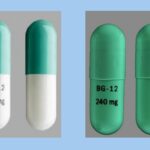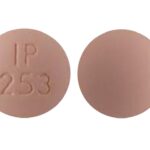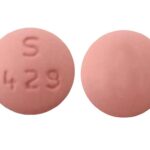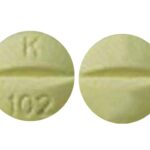Yellow A 80 Pill: Uses, Dosage, Side Effects, Interactions
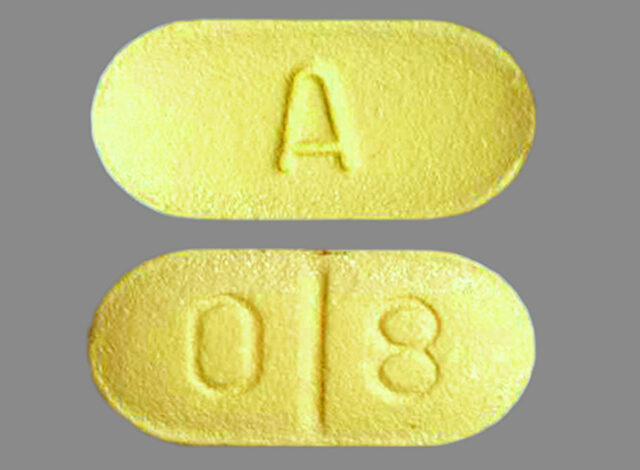
The capsule shaped yellow pill with the imprint A 0 8 has been identified as Mirtazapine 15 mg supplied by Aurobindo Pharma. Mirtazapine belongs to the group of medications known as tetracyclic antidepressants. Antidepressants are used to help relieve the symptoms of depression such as feeling low, sleeping problems, loss of appetite, and loss of interest in activities that you would normally enjoy doing.
When you have depression, certain chemicals in the brain are out of their normal balance. Antidepressants such as mirtazapine work by helping to bring the chemicals back into balance. Antidepressants usually take at least a few weeks to achieve their beneficial effect, so it is important to have patience and take the medication exactly as prescribed by your doctor. Mirtazapine 15 mg is not a controlled substance under the Controlled Substances Act (CSA).
How should I use A 0 8 pill?
The recommended starting dose of A 0 8 pill for adults is 15 mg taken once daily in the evening before going to bed. Your doctor may increase the dose to 30 mg after 1 to 2 weeks, depending on circumstances. The maximum recommended dose of mirtazapine is 45 mg daily. Swallow the tablets whole with water. Do not chew the tablets.
If you are taking the orally disintegrating tablet form of mirtazapine, it is important to handle these tablets properly.
The orally-disintegrating tablets have been designed to rapidly dissolve on the tongue and can be swallowed with saliva. Ensure that your hands are dry and peel the foil backing off the package to remove the tablet from the blister packaging. Do not try to push the tablet through the foil, as this may cause the tablet to crumble. Immediately place the tablet on your tongue. Note that the tablets must be used immediately after removal from packaging. The tablets cannot be stored once they are removed from their packaging.
Many things can affect the dose of medication that a person needs, such as body weight, other medical conditions, and other medications. If your doctor has recommended a dose different from the ones listed here, do not change the way that you are taking the medication without consulting your doctor.
It is normal to not feel any difference for the first 2 to 4 weeks of taking this medication. If you have side effects from this medication, talk with your doctor or pharmacist before stopping it.
It is important to take this medication exactly as prescribed by your doctor. If you miss your evening dose, do not take the missed dose the next morning. Skip the missed dose and continue with your regular dosing schedule in the evening. Do not take a double dose to make up for a missed one. If you are not sure what to do after missing a dose, contact your doctor or pharmacist for advice.
What are the side effects of yellow A 80 pill?
The following side effects have been reported by at least 1% of people taking this medication. Many of these side effects can be managed, and some may go away on their own over time.
Contact your doctor if you experience these side effects and they are severe or bothersome. Your pharmacist may be able to advise you on managing side effects.
• constipation
• dizziness
• drowsiness
• dry mouth
• headache
• increased appetite
• itchiness
• nightmares or vivid dreams
• restlessness
• weakness
• weight gain
Although most of the side effects listed below don’t happen very often, they could lead to serious problems if you do not seek medical attention.
Check with your doctor as soon as possible if any of the following side effects occur:
• abnormal heart rate or rhythm
• aggressive behaviour
• burning, tingling, stinging, or tickly sensations on the skin
• breast enlargement or discharge
• confusion or changes in thought patterns
• difficulty urinating
• dizziness when standing from a sitting or lying position
• fainting
• hallucinations (hearing, seeing, or feeling things that are not there)
• joint or muscle pain
• mania, or feeling “high”
• restless legs
• signs of worsening depression (e.g., poor concentration, changes in weight, changes in sleep, decreased interest in activities, thoughts of suicide)
• signs of infection (such as sore throat, chills, fever, mouth sores)
• signs of liver problems (e.g., nausea, vomiting, diarrhea, loss of appetite, weight loss, yellowing of the skin or whites of the eyes, dark urine, pale stools)
• signs of muscle breakdown (e.g., aching or tender muscles, dark “tea-coloured” urine)
• sleepwalking
• swelling of feet and hands due to fluid retention
• symptoms of high blood sugar (e.g., frequent urination, increased thirst, excessive eating, unexplained weight loss, poor wound healing, infections, fruity breath odour)
• symptoms of low sodium in the body (e.g., weakness, drowsiness, confusion, combined with achy stiff muscles)
• tremor
• uncontrolled sudden movement
• unusual bruising or bleeding
Stop taking the medication and seek immediate medical attention if any of the following occur:
• seizures
• long-lasting (greater than 4 hours) and painful erection of the penis
• signs of an allergic reaction (e.g., difficulty breathing, hives, swelling of the face or throat)
• signs of neuroleptic malignant syndrome (e.g., confusion, reduced consciousness, high fever, or muscle stiffness)
• signs of pancreatitis (e.g., abdominal pain on the upper left side, back pain, nausea, fever, chills, rapid heartbeat, swollen abdomen)
• signs of serotonin syndrome (e.g., delirium, agitation, muscle rigidity, movement difficulty)
• signs of a severe skin reaction such as blistering, peeling, a rash covering a large area of the body, a rash that spreads quickly, or a rash combined with fever or discomfort
• thoughts of suicide or hurting yourself
Some people may experience side effects other than those listed. Check with your doctor if you notice any symptom that worries you while you are taking this medication.
Are there any other precautions or warnings for this medication?
Before you begin taking a medication, be sure to inform your doctor of any medical conditions or allergies you may have, any medications you are taking, whether you are pregnant or breast-feeding, and any other significant facts about your health. These factors may affect how you should take this medication.
Abnormal heart rhythms: Mirtazapine may cause a heart rhythm problem called QT prolongation. If you have a history of QT prolongation, slow or irregular heartbeat, irregular heart rhythm, heart failure, heart attack, heart disease, taking other medications known to cause QT prolongation, or a family history of sudden cardiac death at less than 50 years of age, discuss with your doctor how this medication may affect your medical condition, or how your medical condition may affect the dosing and effectiveness of this medication. Your doctor will perform tests at regular intervals to monitor for any changes in your heart rhythm.
Blood disorders: Mirtazapine can affect the production of blood cells in your body. It may cause a reduced number of white blood cells to be available to fight infection. If you notice any signs of infection, such as fever, chills, sore throat or flu-like symptoms, contact your doctor as soon as possible.
Cholesterol: Mirtazapine can cause increased blood cholesterol levels. If you are at risk of developing high cholesterol or you have high cholesterol levels before starting mirtazapine, discuss with your doctor how this medication may affect your medical condition, how your medical condition may affect the dosing and effectiveness of this medication, and whether any special monitoring is needed.
Diabetes: Mirtazapine may cause a loss of control of diabetes by increasing blood glucose (sugar). If you have diabetes or are at risk for developing diabetes, discuss with your doctor how this medication may affect your medical condition, how your medical condition may affect the dosing and effectiveness of this medication, and whether any special monitoring is needed.
Drowsiness/reduced alertness: Mirtazapine may cause drowsiness. People taking mirtazapine should avoid operating hazardous machinery (including cars) until they are certain that the medication does not impair their mental alertness, judgment, or physical coordination.
Glaucoma: Although uncommon, mirtazapine may cause the symptoms of glaucoma (increased pressure in the eye) to become worse. If you have glaucoma, discuss with your doctor how this medication may affect your medical condition, how your medical condition may affect the dosing and effectiveness of this medication, and whether any special monitoring is needed. Report any changes in vision to your doctor as soon as possible while you are taking this medication.
Lactose: Some formulations of this medication contain lactose. If you have hereditary problems of galactose intolerance, lactase deficiency, or glucose-galactose malabsorption, talk to your doctor about whether this medication is appropriate for you.
Low blood pressure: Some people taking mirtazapine experience sudden blood pressure drops when getting up from a sitting or lying position. These blood pressure drops could lead to dizziness, lightheadedness, and falls. If you experience this problem, try getting up more slowly. If it persists or if you faint, contact your doctor.
Kidney disease: Kidney disease or reduced kidney function may cause this medication to build up in the body, causing side effects. If you have kidney problems, discuss with your doctor how this medication may affect your medical condition, how your medical condition may affect the dosing and effectiveness of this medication, and whether any special monitoring is needed. Your doctor may want to test your liver function regularly with blood tests while you are taking this medication.
Lactose intolerance: This medication contains lactose. If you have galactose intolerance (galactosemia, glucose-galactose malabsorption, or Lapp lactase deficiency) you should not take this medication. Talk to your doctor about other alternatives.
Liver disease: Liver disease or reduced liver function may cause this medication to build up in the body, causing side effects. If you have liver problems, discuss with your doctor how this medication may affect your medical condition, how your medical condition may affect the dosing and effectiveness of this medication, and whether any special monitoring is needed. Your doctor may want to test your liver function regularly with blood tests while you are taking this medication.
If you experience symptoms of liver problems such as fatigue, feeling unwell, loss of appetite, nausea, yellowing of the skin or whites of the eyes, dark urine, pale stools, abdominal pain or swelling, and itchy skin, contact your doctor immediately.
Neuroleptic malignant syndrome (NMS): Mirtazapine, like other medications that affect serotonin, can cause a potentially fatal syndrome known as neuroleptic malignant syndrome (NMS). If you notice the symptoms of NMS such as high fever, muscle stiffness, confusion or loss of consciousness, sweating, racing or irregular heartbeat, or fainting, get immediate medical attention.
Prostate and urinary tract problems: This medication can affect urinary tract function. It may cause or increase the difficulty starting urine flow or completely emptying the bladder, or contribute to incontinence (urine leakage). If you have a history of urinary retention problems, benign prostatic hypertrophy, or other prostate problems, discuss with your doctor how this medication may affect your medical condition, how your medical condition may affect the dosing and effectiveness of this medication, and whether any special monitoring is needed.
Seizures: If you have a seizure disorder or a history of seizures, discuss with your doctor how this medication may affect your medical condition, how your medical condition may affect the dosing and effectiveness of this medication, and whether any special monitoring is needed.
Serotonin syndrome: Severe reactions are possible when mirtazapine is combined with other medications that act on serotonin, such as antipsychotics, “triptan” migraine medications and other medications used to treat depression. These combinations must be avoided. Symptoms of a reaction may include muscle rigidity and spasms, difficulty moving, and changes in mental state including delirium and agitation. Coma and death are possible.
If you are taking any of these groups of medications, discuss with your doctor how this medication may affect your medical condition, how your medical condition may affect the dosing and effectiveness of this medication, and whether any special monitoring is needed.
Stopping the medication: Stopping this medication suddenly may cause side effects such as dizziness, agitation, confusion, headache, sweating, and others. A gradual reduction in dose over a period of time is recommended. If you are thinking about stopping the medication, check with your doctor first.
Suicidal or agitated behaviour: Adults and children taking this medication may feel agitated (restless, anxious, aggressive, emotional, and feeling not like themselves), or they may want to hurt themselves or others. These symptoms may occur within several weeks after starting this medication. If you experience these side effects or notice them in a family member who is taking this medication, contact your doctor immediately. Your doctor will monitor you closely for these side effects while you are taking this medication.
Mirtazapine may cause symptoms of mania to worsen or to return. People with a history of manic symptoms or bipolar disorder should discuss with their doctor how this medication may affect their medical condition, how their medical condition may affect the dosing and effectiveness of this medication, and whether any special monitoring is needed.
Pregnancy: This medication should not be used during pregnancy unless the benefits outweigh the risks. It has been reported that babies born to women who have taken mirtazapine during the last trimester of pregnancy may experience complications that result in an increase in the length of their hospital stay. If you become pregnant while taking this medication, contact your doctor immediately.
Breast-feeding: It is not known if mirtazapine passes into breast milk. If you are a breast-feeding mother and are taking this medication, it may affect your baby. Talk to your doctor about whether you should continue breast-feeding.
Children and adolescents: The safety and effectiveness of this medication have not been established for children and adolescents under 18 years of age. There have been reports that the use of this medication by children and adolescents younger than 18 years may cause behavioural and emotional changes, such as suicidal thoughts and behaviour. Children and adolescents who take this medication should be closely monitored and encouraged to report all changes in feelings to their doctor and caregiver.
Seniors: Seniors often have decreased kidney or liver function. For this reason, they often have this medication build up in the body and experience more side effects than younger people. A lower dose may be needed for older people.
What other drugs could interact with this medication?
There may be an interaction between mirtazapine and any of the following:
• alcohol
• alpha agonists (e.g., clonidine, guanfacine, methyldopa)
• amiodarone
• amphetamines (e.g., dextroamphetamine, lisdexamfetamine)
• antihistamines (e.g., cetirizine, doxylamine, diphenhydramine, hydroxyzine, loratadine)
• antipsychotics (e.g., chlorpromazine, haloperidol, olanzapine, perphenazine, prochlorperazine, quetiapine, risperidone)
• apalutamide
• aprepitant
• azelastine
• “azole” antifungals (e.g., itraconazole, ketoconazole, voriconazole)
• barbiturates (e.g., butalbital, pentobarbital phenobarbital)
• benzodiazepines (e.g., clobazam, diazepam, lorazepam, oxazepam)
• bosentan
• bromocriptine
• brimonidine
• buprenorphine
• bupropion
• buspirone
• butorphanol
• calcium channel blockers (e.g., amlodipine, diltiazem, nifedipine, verapamil)
• cannabis
• chloral hydrate
• cimetidine
• cobicistat
• conivaptan
• dabrafenib
• deferasirox
• dexmethylphenidate
• dextromethorphan
• disopyramide
• dronedarone
• entacapone
• enzalutamide
• ergot alkaloids (e.g., ergotamine, dihydroergotamine)
• flecainide
• grapefruit juice
• HIV non-nucleoside reverse transcriptase inhibitors (NNRTIs; e.g., efavirenz, etravirine, nevirapine)
• HIV protease inhibitors (e.g., atazanavir, indinavir, ritonavir, saquinavir)
• linezolid
• lithium
• lumacaftor and ivacaftor
• macrolide antibiotics (e.g., clarithromycin, erythromycin)
• methadone
• methylene blue
• methylphenidate
• metoclopramide
• mexiletine
• mifepristone
• mitotane
• modafinil
• monoamine oxidase inhibitors (MAOIs; e.g., moclobemide, phenelzine, rasagiline, selegiline, tranylcypromine)
• muscle relaxants (e.g., baclofen, cyclobenzaprine, methocarbamol, orphenadrine)
• nabilone
• opioid pain relievers (e.g., codeine, fentanyl, meperidine, methadone, morphine, oxycodone)
• pramipexole
• procainamide
• protein kinase inhibitors (e.g., imatinib, dasatinib, pazopanib, sunitinib,)
• quinidine
• quinine
• rifabutin
• rifampin
• ropinirole
• rotigotine
• sarilumab
• seizure medications (e.g., clobazam, carbamazepine, levetiracetam, phenobarbital, phenytoin, primidone, topiramate, valproic acid, zonisamide)
• selective serotonin reuptake inhibitors (SSRIs; e.g., citalopram, fluoxetine, paroxetine, sertraline)
• serotonin antagonists (anti-emetic medications; e.g., granisetron, ondansetron)
• serotonin/norepinephrine reuptake inhibitors (SNRIs; e.g., desvenlafaxine, duloxetine, venlafaxine)
• siltuximab
• sotalol
• tapentadol
• tocilizumab
• tramadol
• trazodone
• tricyclic antidepressants (e.g., amitriptyline, desipramine, imipramine)
• “triptan” medications for migraine (e.g., rizatriptan, sumatriptan)
• tryptophan
• warfarin
• zolpidem
• zopiclone
If you are taking any of these medications, speak with your doctor or pharmacist. Depending on your specific circumstances, your doctor may want you to:
• stop taking one of the medications,
• change one of the medications to another,
• change how you are taking one or both of the medications, or
• leave everything as is.
An interaction between two medications does not always mean that you must stop taking one of them. Speak to your doctor about how any drug interactions are being managed or should be managed.
Medications other than those listed above may interact with this medication. Tell your doctor or prescriber about all prescription, over-the-counter (non-prescription), and herbal medications that you are taking. Also tell them about any supplements you take. Since caffeine, alcohol, the nicotine from cigarettes, or street drugs can affect the action of many medications, you should let your prescriber know if you use them.

